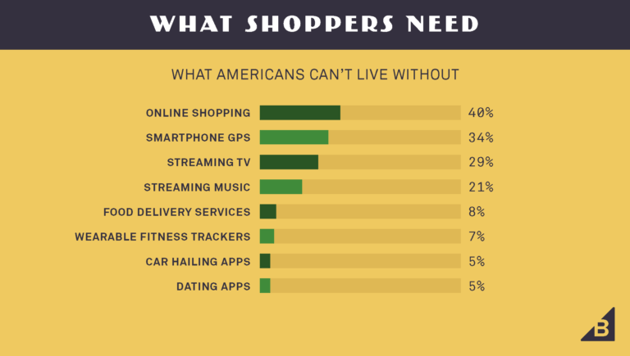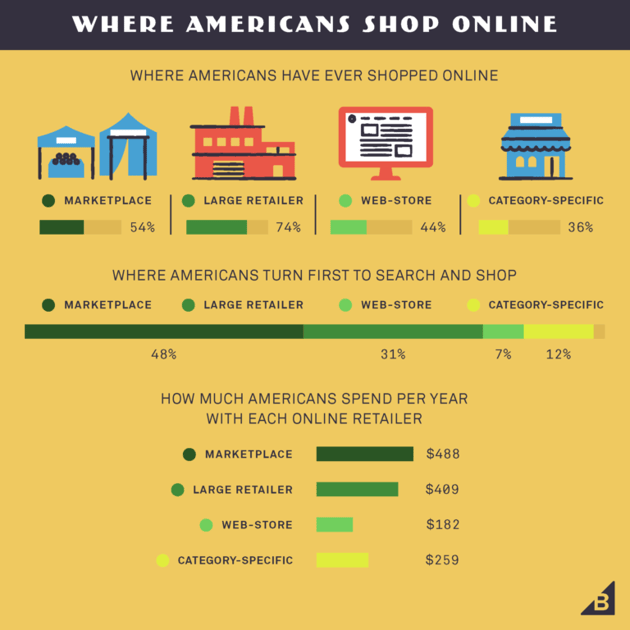Proof that Online Shopping is Essential

Ecommerce merchants rejoice, because a new Bigcommerce study shows just how essential Americans consider online shopping.
The State of Omni-Channel Retail report reveals that 40 percent of respondents said they could not live without online shopping, and respondents were nearly twice as likely to say they could not live without online shopping compared to streaming music (see image).

The study, which was conducted to determine how U.S. shoppers buy online and to inform the industry on running an effective online business in today's retail environment, also found that 96 percent of Americans are shopping online and spending an average of five hours per week making online purchases. What's more, an average of 36 percent of the respondents' shopping budgets are allocated to ecommerce.
"Shoppers are dedicating more of their time and budget to online shopping, and the frequency and number of online stores they purchase from has grown exponentially during the past few years," said Troy Cox, senior product director at BigCommerce. "With ecommerce now such a prevalent part of America's buying habits, retailers have an incredible opportunity to reach more customers by opening their business to new channels."
When it comes to who shops online, the study found that 67 percent of millennials and 56 percent of Gen X prefer to search and purchase on ecommerce sites than in-store. Conversely, the same was true for 41 percent of baby boomers and 28 percent of seniors. One surprising data point from the study shows that online shoppers in metropolitan areas spend more online annually ($853) than suburban shoppers ($768) and rural shoppers ($684) - despite being closer in proximity to physical stores.
As for where and when consumers shop online, the data found that 43 percent have made a purchase while in bed, 25 percent have made an online purchase from a brick-and-mortar store, 23 percent did so from the office and 20 percent have made a purchase from the bathroom or while in the car. Moreover, one in ten shoppers admit to buying something online after drinking alcohol.
Data that online retailers will certainly care about shows where online shoppers tend to shop, revealing that 48 percent of online customer journeys begin at ecommerce marketplaces like eBay and Amazon. For instance, online shoppers have spent the most with ecommerce marketplaces in the last year ($488), followed by major online/offline brands ($409) like Nordstrom or Best Buy (see image).

Other noteworthy stats reveal that 87 percent of respondents cited price as influential when determining where to shop online, followed by 80 percent who said shipping cost and speed is influential. In fact, 66 percent of respondents have decided not to buy an item because of shipping costs. Additional data shows that 78 percent of respondents want products to be brought to life with images and 69 percent want product reviews.
Lastly, the study is shedding light on social shopping, revealing that respondents were most open to making a purchase on Facebook (20 percent), followed by Pinterest (17 percent), Instagram (14 percent), Twitter (12 percent) and Snapchat (10 percent). Moreover, 23 percent of males are open to making a purchase on Facebook compared to 17 percent of females.








